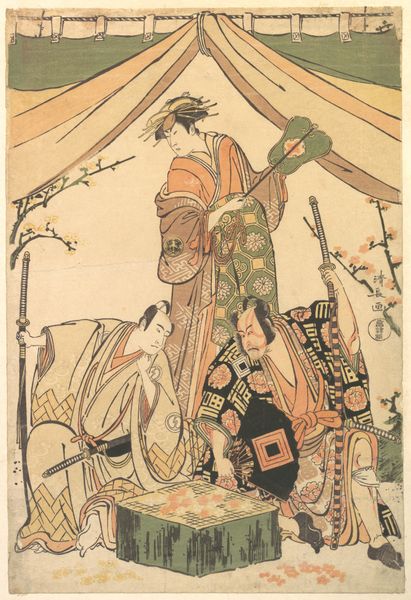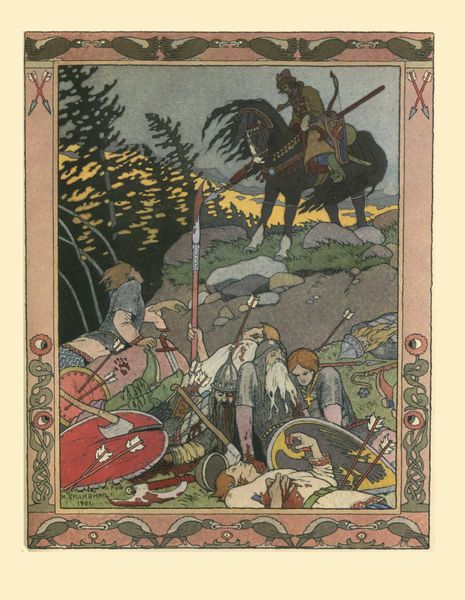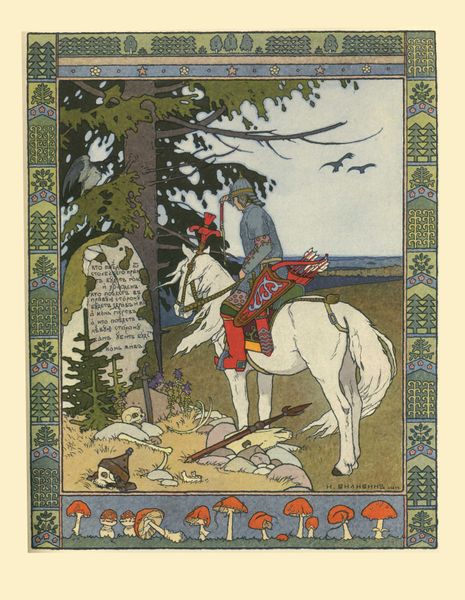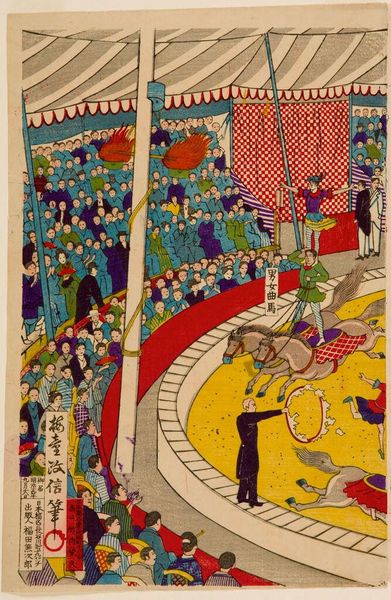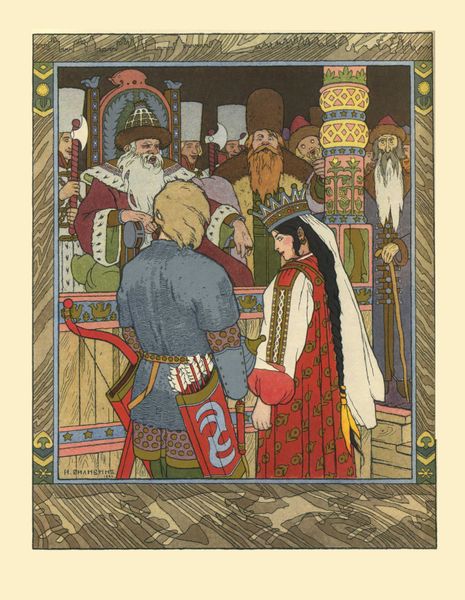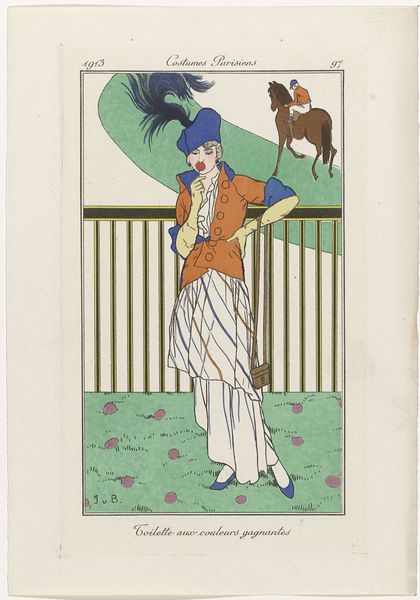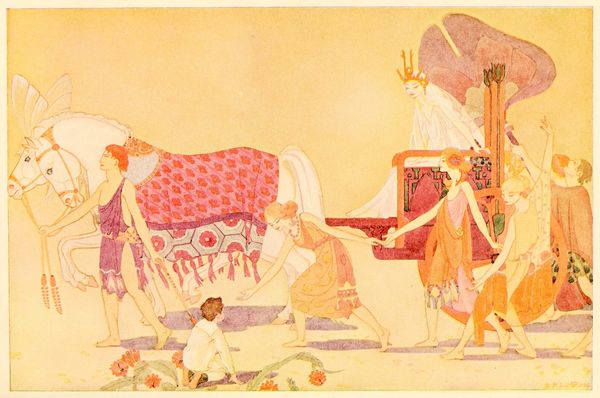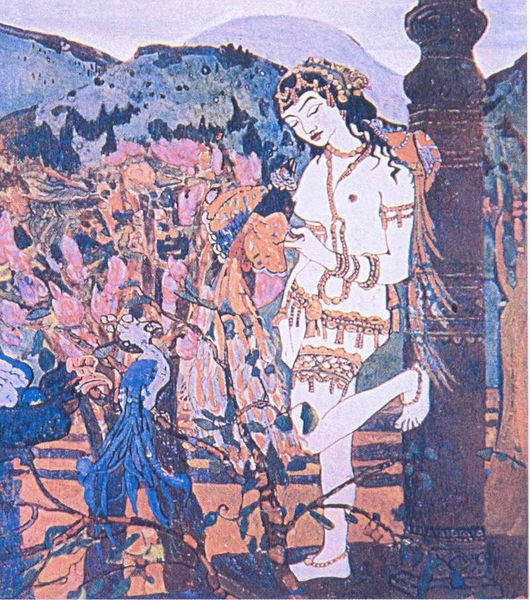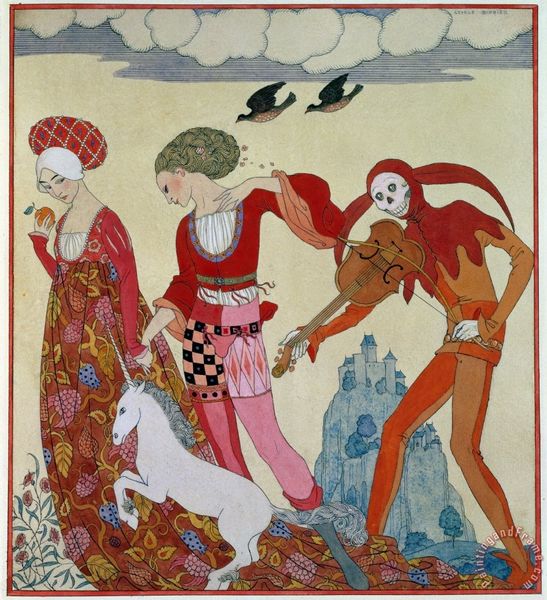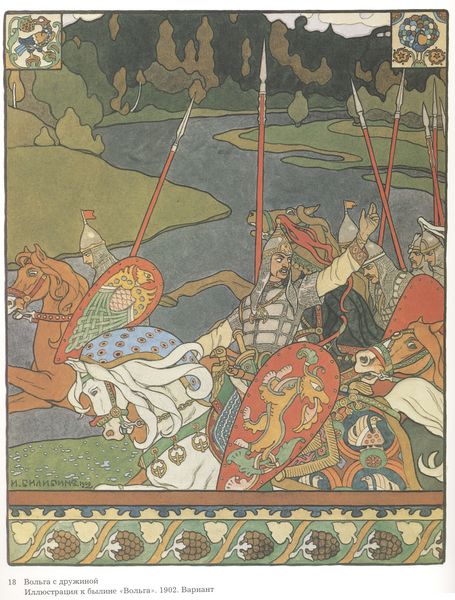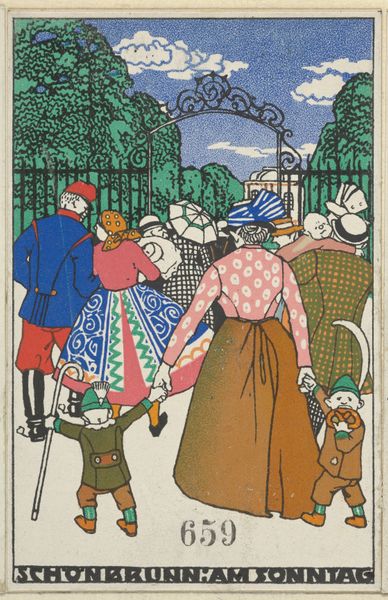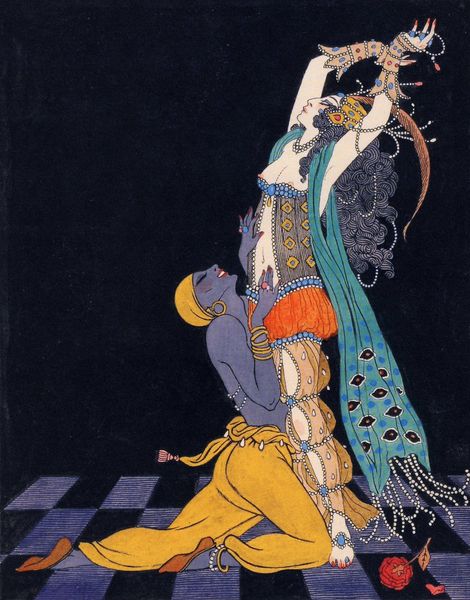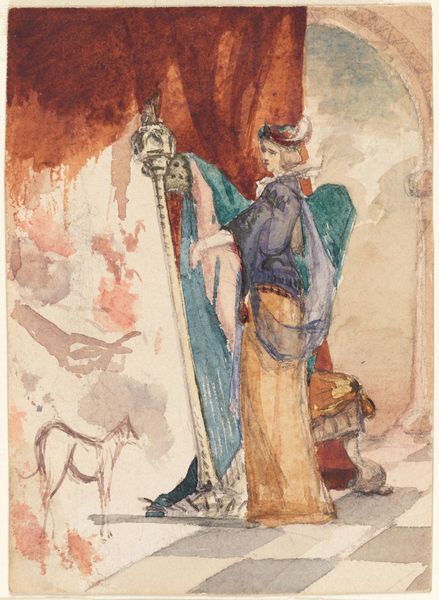
Illustration for King Mouselet And Prince Youth and The Bold Dwarfs' Adventures 1905
0:00
0:00
pencil
#
fairy-painting
#
art-nouveau
#
traditional media
#
joyful generate happy emotion
#
flat colour
#
illustrative and welcoming imagery
#
pencil
Copyright: Public domain
Editor: This illustration, made with pencil in 1905 by Artuš Scheiner, is titled "Illustration for King Mouselet And Prince Youth and The Bold Dwarfs' Adventures." I find it interesting how the artist combines these flat colours with so much ornamental detail, it almost feels like tapestry. What catches your eye? Curator: As a materialist, I am immediately drawn to the artist's chosen medium. Pencil, in its seemingly humble form, becomes a powerful tool for illustrating not just the story, but also the labor embedded in its creation. Notice how the textures and shading build the depth, yet retain this flatness characteristic of mass production, such as what might be found in printed books of the era. Editor: So you're saying that by using pencil, Scheiner is deliberately nodding to more accessible forms of art? Curator: Precisely! It challenges the art world's traditional hierarchies. Consider the social context: printed illustrations were becoming increasingly accessible, disseminating stories and art to wider audiences. How does the "Art Nouveau" style intersect with this access to cheaper material processes? Editor: I suppose Art Nouveau, often seen in decorative objects, was becoming more accessible too. Is Scheiner perhaps blurring the lines between high art and design for mass consumption? Curator: Absolutely. This pencil illustration exists as both a unique work of art and a potential template for mass reproduction. It prompts us to consider the role of the artist within a growing industrialized society, providing visuals to children and families otherwise barred from such expensive entertainments. It's a great tension here. Editor: I never thought of it that way. I guess I was focusing on the aesthetics of the image itself, and now it's opened up into this interesting question of who was it really for? Curator: Indeed. And how it arrived in the hands of the end user? Paying attention to the material conditions of art allows us to reconsider who is doing the work, and for what social purpose.
Comments
No comments
Be the first to comment and join the conversation on the ultimate creative platform.
